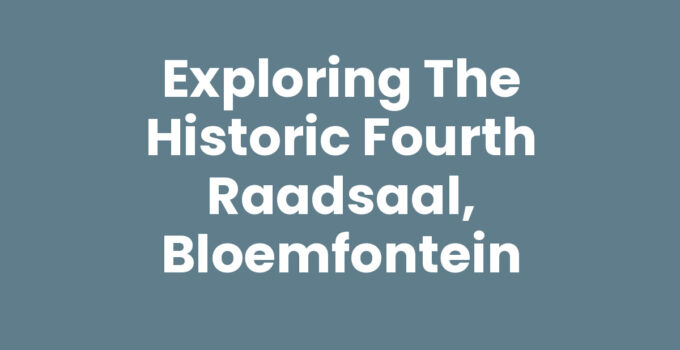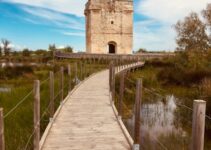Known for its rich history and stunning architecture, the Fourth Raadsaal is one of Bloemfontein’s most significant landmarks. Situated in the heart of the Free State’s capital, this building is a testament to South Africa’s political history and cultural heritage. If you’re planning a visit or want to learn more about this remarkable site, you’re in the right place! In this blog post, we will cover everything you need to know about the Fourth Raadsaal, Bloemfontein from its history to visiting tips.
Fourth Raadsaal, Bloemfontein: A Step-by-Step Guide to Its History
The Fourth Raadsaal was constructed between 1892 and 1899, making it a key architectural triumph of the period. This building replaced earlier Raadsaals and serves as a pivotal piece of Bloemfontein’s local governance and history. Here’s a closer look at its historical significance and what it represents in the context of South African history.
Historical Background
Initially, the Raadsaal was designed to house the legislative assembly of the Orange Free State, a republic established by the Boers in the mid-19th century. The architectural design showcases Victorian influences with intricate details that have been well-preserved over the years. Architect Sir Herbert Baker crafted the structure to symbolize the strength and resilience of the Free State.
As you explore its various halls and chambers, you will come across portraits and artifacts that tell the incredible stories of individuals who played pivotal roles in this nation’s journey.
Architectural Features
The Fourth Raadsaal is built in a neoclassical style, featuring strong columnar structures and grand entrance steps leading to the main door. The facade is an excellent example of meticulous craftsmanship, showcasing plateau stone work adorned with symbolic carvings of the Republik. Inside, the main chamber is spacious, with high ceilings decorated with exquisite woodwork and paintings that reflect the cultural heritage of the region. When visiting, take note of the windows; each stained-glass piece tells a story of freedom and unity.
Further Reading: Top Fine Dining Restaurants Bloemfontein: Experience Luxury Cuisine
Visiting the Fourth Raadsaal: Practical Tips
If you’re planning a visit to the Fourth Raadsaal, here are some essential tips to enhance your experience:
Opening Hours and Accessibility
The Fourth Raadsaal is generally open to the public for visits during weekdays. It’s advisable to check local listings for exact times, as special events might alter the schedule. The site is accessible and welcomes visitors of all age groups. Guided tours are often available and can provide you with deeper insights into the building’s history and architecture.
What to Expect During Your Visit
Upon entering the Fourth Raadsaal, you’ll be greeted by its colossal structure, which is a marvel in itself. The main chamber acts not only as a symbolic representation of governance but also hosts various art exhibitions and cultural events throughout the year. Feel free to explore the gardens surrounding the Raadsaal, where you will find sculptures depicting significant historical figures.
Nearby Attractions
After visiting the Fourth Raadsaal, consider exploring the nearby attractions, including:
- The Supreme Court of Appeal
- The National Museum in Bloemfontein
- President Brand Street for local shops and eateries
These sites provide a comprehensive view of Bloemfontein’s rich cultural landscape.
Check This: Finding Trusted Doctors in Bloemfontein: Your Ultimate Guide
Conclusion
In conclusion, the Fourth Raadsaal in Bloemfontein is more than just an architectural marvel; it is a profound symbol of South Africa’s political legacy. Whether you’re a history buff or simply in search of a picturesque destination, visiting this landmark will undoubtedly be a rewarding experience. Make sure to take plenty of photos, immerse yourself in the history, and enjoy the beauty of Bloemfontein!
Check This: Explore the Best of Bloemfontein City Tour: A Complete Guide
Frequently Asked Questions
What is the historical significance of the Fourth Raadsaal?
The Fourth Raadsaal is historically significant as it housed the legislative assembly of the Orange Free State and represents South African political history.
What architectural style is the Fourth Raadsaal designed in?
The Fourth Raadsaal is designed in a neoclassical architectural style, showcasing Victorian influences and detailed craftsmanship.
Can visitors access the Fourth Raadsaal?
Yes, the Fourth Raadsaal is open to the public during weekdays, and guided tours are often available for a more in-depth experience.



